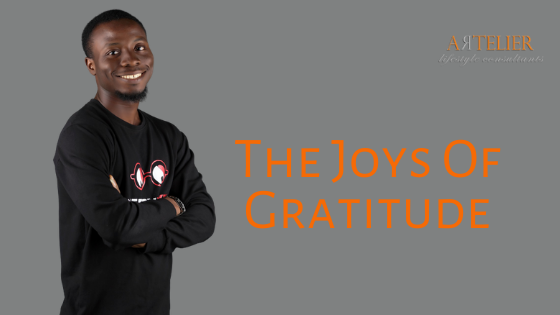In general people, (but particularly women) tend to focus quite a bit on the ‘externals’ of beauty, but I would like to turn the lens inwards for a change and talk about inner beauty. The designer brands, beautiful clothes and fabulous accessories are all nice; but if the wearer does not believe in herself or has a low self esteem, then in spite of her glamorous appearance, she might still feel rather inadequate or unsure, which might come through in the way she carries herself; at best projecting mixed signals.
A healthy self image is crucial to a truly successful and happy life. It is often said that some of the most attractive women are also some of the most insecure because the overwhelming focus on their outward beauty encourages a preoccupation with their physical appearance that does not allow for any meaningful character development. But what is beauty? Clearly the notion of beauty is one that is defined as much by the individual, as by the society or era in which one finds oneself. The adage “Beauty is in the eye of the beholder” is certainly true. From the North American image of the bosomy, blonde bombshell to the near obese Mauritanian ideal of beauty, attractiveness is perceived quite differently according to the geographical location. It is clear that Marilyn Monroe might have been hastily dispatched to a fattening camp if she had somehow ended up in Nouakchott; with a ‘15,000 calorie-per-day’ diet of Camel’s milk and fat lamb to help her along the way. The stretched earlobes of the Masai women are another example, just as the Maoris of New Zealand tattoo their lips and chins blue-black to attract the opposite sex.
What is universal however, is that a woman who has not learnt to love and appreciate herself or value who she is, will continue to make choices that reflect that mindset and betray her best interests, no matter how many beauty procedures she has and sadly, no matter how many people truly love and admire her.
Body dysmorphic disorder may occur in varying degrees from a general preoccupation with one’s flaws (real or perceived) to the extreme and complete obsession with a body part or parts, which the individual feels they have got to do something about. A completely distorted picture of one’s true appearance. Valeria Lukyanova, the Ukrainian who gradually turned herself into a life-size version of Barbie complete with a tiny waist and doe eyes may seem like a nut-case but in reality her fixation is only several short stages removed from a beautiful dark-skinned person who decides to bleach himself (or herself) near white. When health is endangered, it becomes a clear case of simply going too far for ‘beauty’. Peer pressure is most powerful among people who feel a strong need for other people’s approval. The need to belong. The statistics are frightening. Sometimes body image issues morph into anorexia – self starvation – or bulimia, the binge and purge cycle, where people overstuff themselves and then throw up or abuse laxatives. Speaking on these potentially fatal syndromes, Emily Kravinky, a medical director at the Renfrew Centre in Philadelphia (a treatment centre for women with eating disorders) says “Some of these women don’t know how to cope or soothe themselves. They have low self esteem. (..) the distance between the cultural ideal of what we would like to look like and the reality of what we actually look like is becoming wider.” The truth however, is that even supermodels aren’t spared the torment of low self esteem. When the beautiful French model Noemie Lenoir tried to commit suicide about four years ago, there was already a ‘catalogue’ of other high-profile models who had successfully killed themselves. Young, beautiful people with glamorous jobs, perfect faces, bodies and lives.. or so it seemed.
According to a well-known New York therapist, Jonathan Alpert “There’s often an utter lack of confidence behind these striking bodies and faces, and the demands and expectations are unreasonable.”
So if having the perfect body and complexion doesn’t guarantee us a blissful life, why don’t we appreciate and make the most of what we do have? Everyone has strengths and weaknesses, let us choose to love and accept who we are because that’s who God made us.
Lauren Hutton became known for the gap in her front teeth at a time and in an era when it was not considered aesthetically acceptable. Retaining that slight imperfection although she had been advised to correct it, Lauren went on to become a top fashion model, appearing on the cover of Vogue magazine a total of twenty-six times. She was known as “the fresh American face of fashion”, and at the age of fifty, signed a second multi-million dollar contract with Revlon, as well as launching her own line of cosmetics. Now aged seventy, Lauren is still working, signed to IMG Models in New York, Paris and London. Not bad for a lady who wasn’t really given a chance to start with. A 1973 Harper’s Bazaar profile summed her up this way; “Lauren is anything but a classical beauty. Her nose flies west, her mouth flies north, she can cross her left eye at will. She made herself beautiful by learning, watching, willing—not by surgically altering her defects.”
Iman’s long graceful neck, characteristic of her East African roots sets her apart from the rest. Likewise, the Southern-Sudanese born supermodel Alek Wek, who for several years has been in demand for her ebony complexion and clothes-hanger frame, while many other models who may consider themselves prettier sit idle.
We need to embrace our ‘imperfections’ because they make us unique. Our concern should be to build strong, healthy bodies and to like who we are. The most beautiful women are those who love and accept themselves and in turn, are able to love and accept others.






